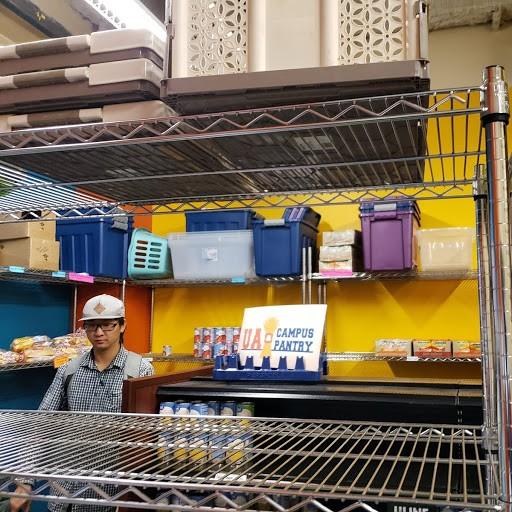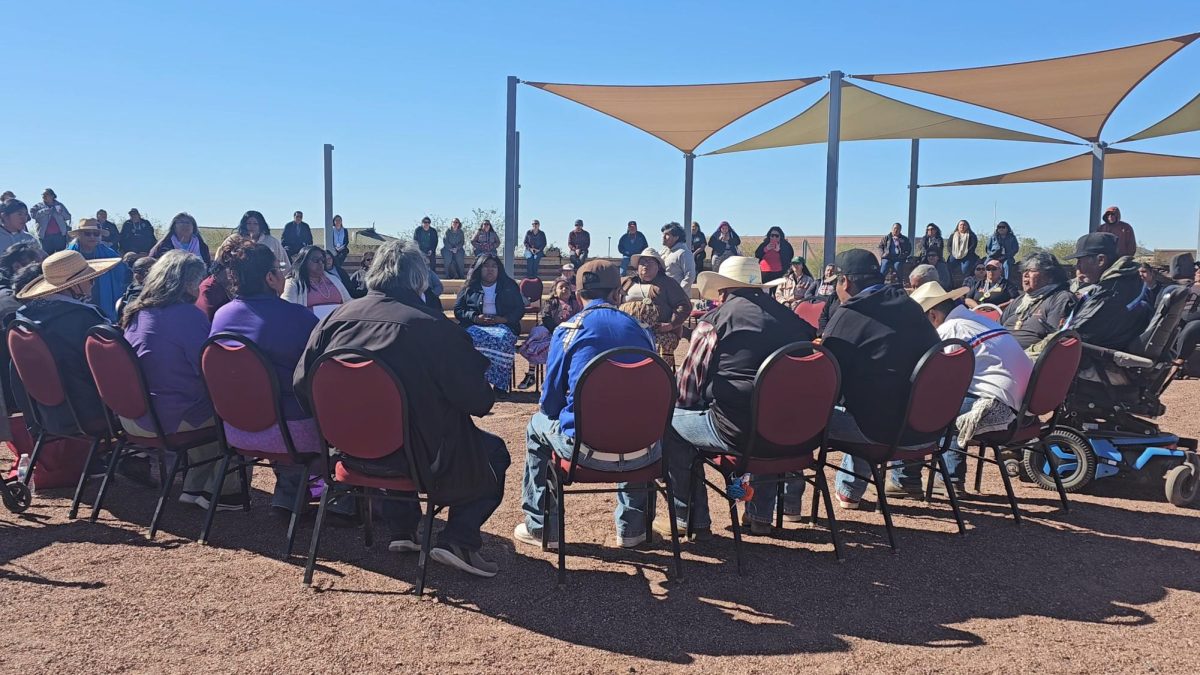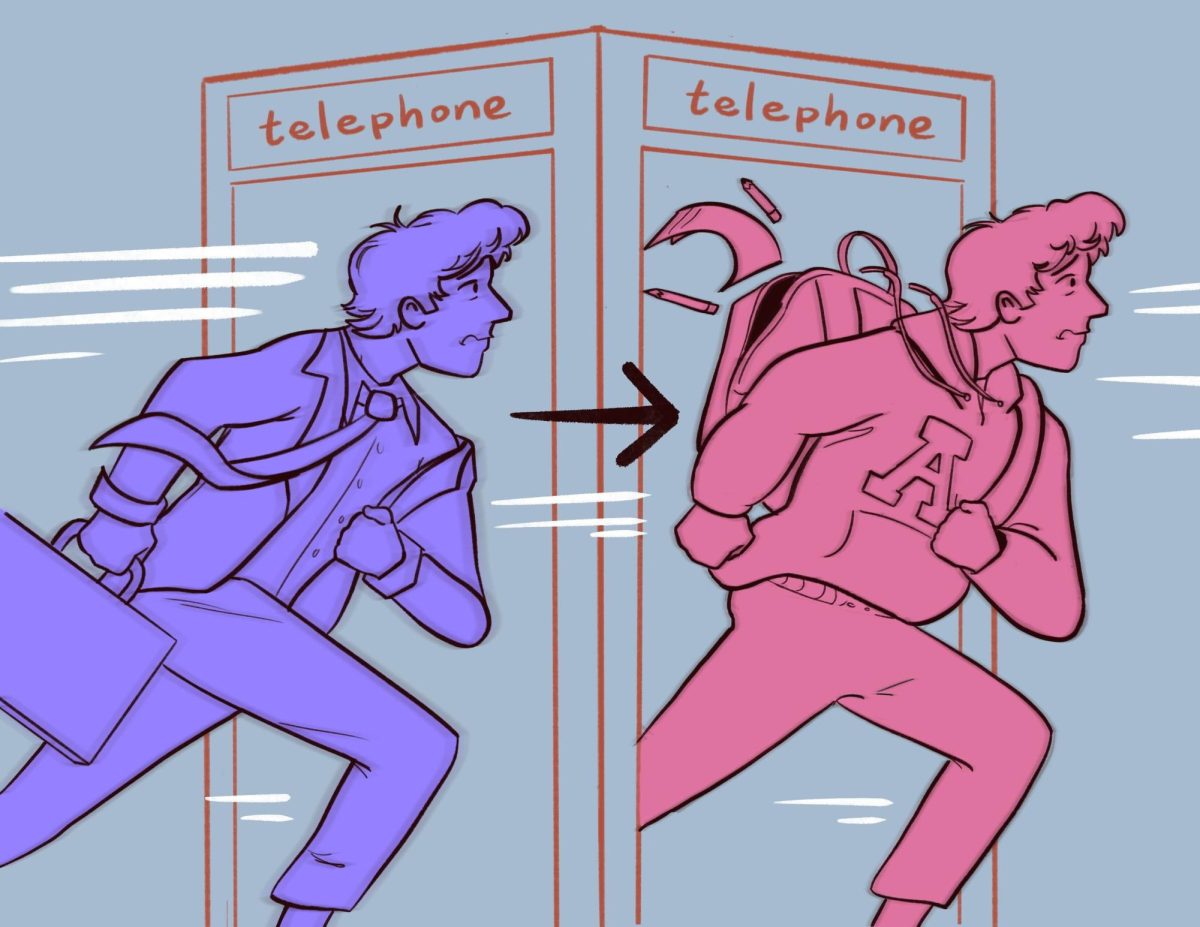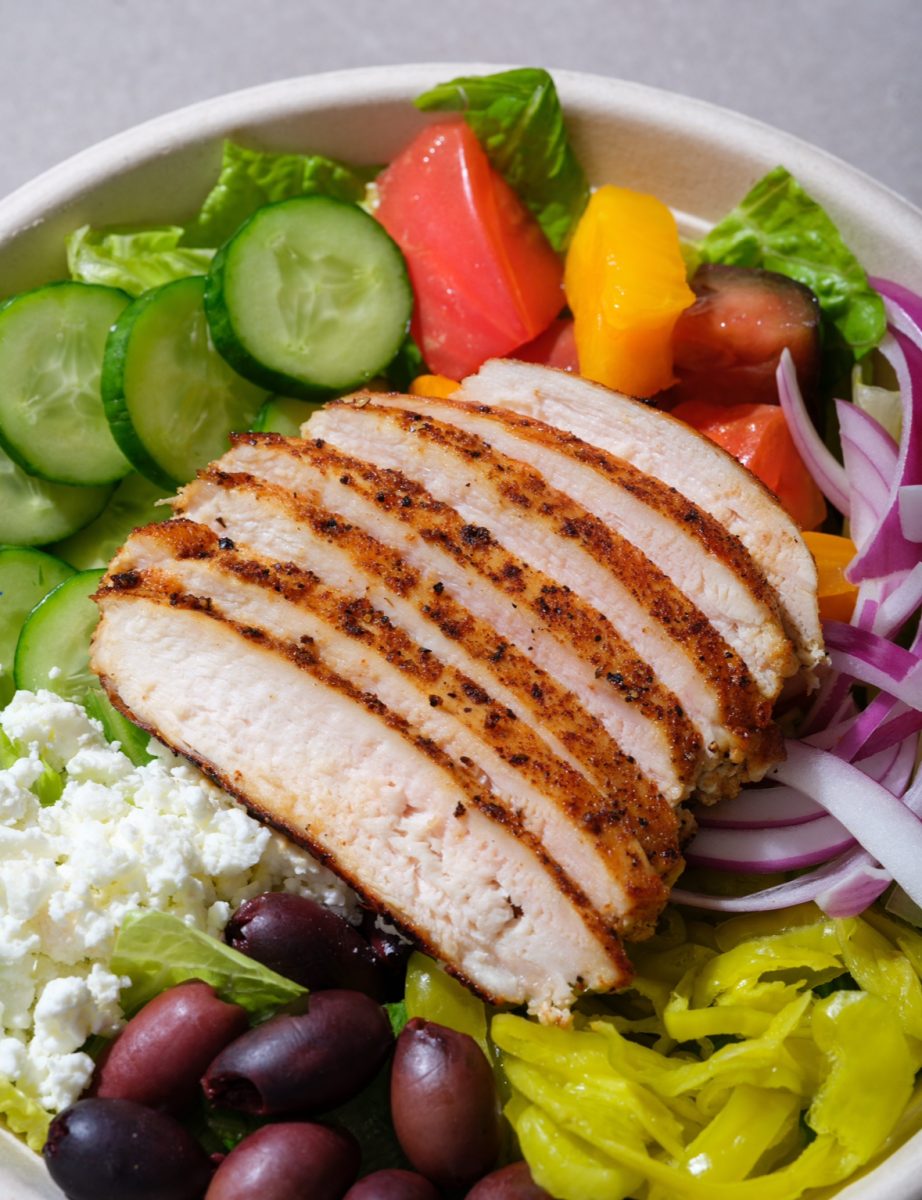The Daily Wildcat sat down with Bridgette Nobbe, coordinator of Campus Pantry and Campus Closet, to learn more about Campus Pantry and the vital role it plays in combating food insecurity on campus.
This article is the second in a series of three profiling the University of Arizona’s Campus Pantry. It answers financial questions about the pantry regarding its sources of funding and how the funds are allocated.
How is Campus Pantry funded?
Campus Pantry receives funds from three primary sources: funding from the UA president, the student services fee and donations.
RELATED: All of your campus pantry questions, answered: The basics
What is the president’s fund?
The president’s fund was established by UA President Dr. Robert C. Robbins when he assumed his position at the university in 2017.
“When he toured the pantry in our old space,” Nobbe said, “he loved the pantry and was like, ‘this is a great thing. We need this on our campus.’”
Robbins allocated a permanent fund of $150,000 a year to support the expansion of Campus Pantry’s operating hours and the creation of the rooftop greenhouse. Nobbe said 100% of agricultural produce yielded by the rooftop greenhouse, amounting to about 5,000 pounds of food a year, goes to the pantry.
According to Nobbe, about $55,000 of the fund goes to paying for a graduate assistant and maintaining the rooftop greenhouse. The remaining funds, about $95,000, go solely to paying for food.
What is the student services fee?
The student services fee is used to fund student services, some of which include Think Tank, Scholarship Universe, Safe Ride, Student Legal Services and, of course, Campus Pantry.
The fee is currently $75 per semester and is paid by all UA students.
The board, which manages the student services fee, began allocating funds to Campus Pantry in financial year 2018. In Fiscal year 2021, it allocated $77,100 to the pantry. Nobbe said that for the next three years beginning this July, Campus Pantry anticipates receiving $112,000.
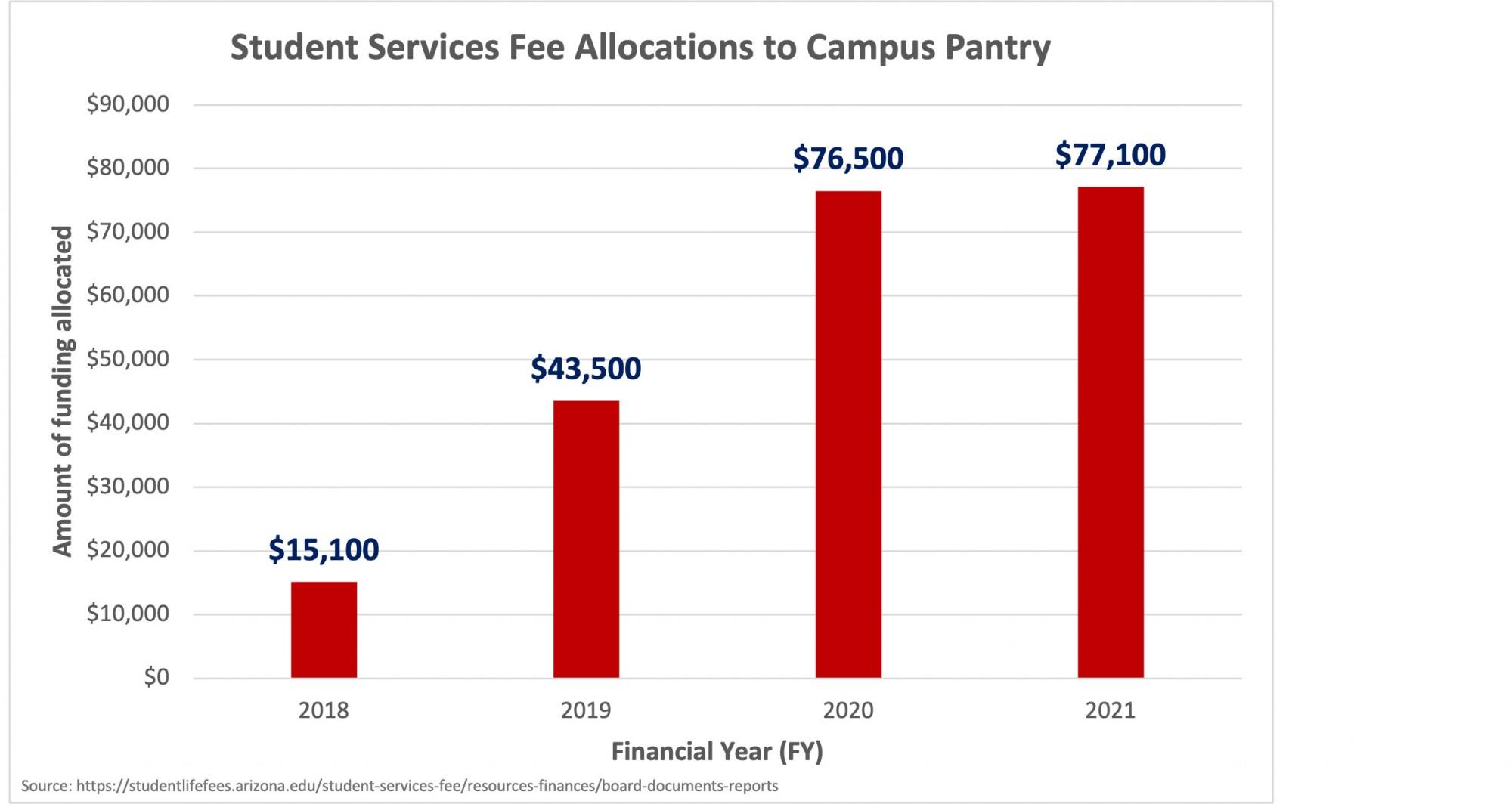
Funds from the student services fee cannot be used for food. Instead, they are used to cover employee, programming and capital costs.
“We have the two student directors — one for Campus Pantry, one for Campus Closet — and eight other student staff who are all paid through that money,” Nobbe said. “Then we have a couple thousand dollars set aside for marketing costs, so that’s any printing that we have to do. We get new signs done every year, we get stuff done for the benefit dinner programs, those types of things are all through [the student services fee]. Then we have capital costs. That’s for when we need new scales, new carts, new baskets, new tables, new all of that type of stuff, tents for outside, all of that type of stuff.”
How much in donations does Campus Pantry typically receive per year?
There are two types of donations: monetary and in-kind. Nobbe estimated that the pantry receives around $150,000 a year in monetary contributions, which are all pooled into a UA Foundation account.
“That is where all of our money from any drives that we host goes,” Nobbe said. “That’s fair game for anything that we need. That could be used for student wages, it could be used for shelving, it can be used for food.”
A large portion of monetary contributions comes from fundraising events like benefit dinners and golf tournaments hosted by the UA Parent and Family Programs. In addition, Campus Pantry usually receives two to three grants from businesses in the area between $5,000 and $10,000.
Last year, Bank of America funded food distributions during the fall because of the COVID-19 pandemic. Kroger, which owns the supermarket chain Fry’s Food & Drug, covers some of the cost of the rooftop greenhouse with a grant from their Zero Hunger | Zero Waste Foundation.
Currently, monetary donations are being used to renovate the space that the pantry and closet occupy.
“We’ve worked out with Student Unions that we’re going to be renovating the downstairs space, the Sonora room, putting in like a retractable wall, kind of like what’s in the ballrooms, making it half Campus Pantry, half Campus Closet,” Nobbe said. “We’re going to redo all the lighting, put in more permanent shelving, which is more accessible for disability reasons, and we’re fundraising right now for that.”
Nobbe said that these renovations are going to play an important part in making visitors feel comfortable using Campus Pantry and Campus Closet.
“Did you ever see the campus pantry when it was in its old location?” Nobbe asked. “You literally walked down this dark staircase, kind of cut through the loading dock, and then we’re in this like, dark hallway. It just felt like a place that you shouldn’t be.”
RELATED: Food insecurity among UA students doubled during the pandemic
The new space that Campus Pantry and Campus Closet occupy, which will be rebranded as a “basic needs center,” is going to feel a lot more welcoming to visitors, Nobbe said. Though plans have yet to be finalized, the pantry wants to foster student engagement and storytelling through chalk murals, photography, paintings and other media.
“It’s gonna be a lot brighter of a space and more physically accessible,” Nobbe said. “So I think that’s going to be an exciting, big thing that we have going on.”
In-kind donations are usually solicited through food drives, the most notable of which occurs near the Thanksgiving holiday. University departments, student clubs and other organizations will set up donation bins where people can drop off non-perishable food items, like canned vegetables or cereal boxes.
Editor’s Note: This piece was produced as part of the “Confronting Scarcity Project” – a collection of reporting, commentary, maps, audio and more aimed at destigmatizing and amplifying the conversation around food and basic needs insecurity. This project was produced with students and the university community in mind as part of a collaboration between the Daily Wildcat and the UA School of Journalism’s student media apprenticeship program.
Follow the Daily Wildcat on Twitter



